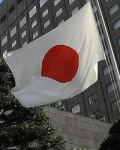-
Indonesia looks outside Asia for future markets
October 28, 2013
INDONESIA is looking outside ASEAN for future markets, but will push to restrict exports of some agricultural products when it hosts the WTO meeting in Bali in December . . .
JAKARTA — Indonesia slipped into its first trade deficit in more than two decades in 2012, reflecting the slowing of global trade and a drop in commodity prices.





